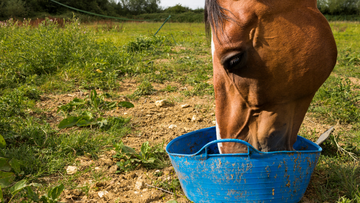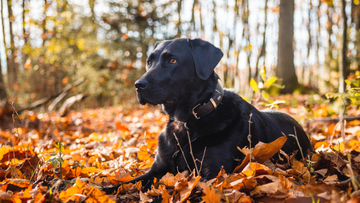The relationship between horses and people is often one of leader and follower. People set the boundaries, and care for the horse in nearly every aspect of its’ life. Because of this, it’s easy to horse owners to think of communication as a one-way street. Realizing animals have their own desires, opinions and emotions open the door for a more harmonious connection, where both parties are observing one another.
How Horses Communicate with People
 As a horse owner, it’s important to remember that people communicate vocally, and horses communicate primarily through body language. Vocal cues are helpful in training, but horses receive most of their instruction through posture, pressure, facial expressions, and gestures.
As a horse owner, it’s important to remember that people communicate vocally, and horses communicate primarily through body language. Vocal cues are helpful in training, but horses receive most of their instruction through posture, pressure, facial expressions, and gestures.
Amy V. Smith, a researcher specializing in horse communication, hypothesized that horses’ domestication has primed them for recognizing people’s facial expressions. Smith showed 28 domestic horses large photos of people’s faces displaying a variety of emotions.
The horses showed angry faces had negative reactions, exhibiting increased heart rates, and viewed the photo through their left eye – which links to the right brain where negative stimuli are processed. This study supported the hypothesis that extensive domestication has prepared them for understanding people – now people just need to do their best to understand them.
How Horses Communicate with Each Other

For horse-to-horse communication, behaviors can range from extremely subtle to full-blown fights. Effectively communicating with one another was a matter of life and death in the wild. There are several ways horses communicate with each other, and an in-tune horse can perceive the smallest movements from others and adjust its behavior within a herd.
- Ears and Eyes: A nervous horse will show wider eyes and active ears, while one at ease will have calm, slower-moving eyes and ears in a relaxed position. The ears and eyes are the starting point for the rest of the equine expression, so look at them first.
- Posture: Equine posture is the largest form of expression, and horses with an established herd pecking horse can move each other around with something as simple as a power walk, slight turn of the haunches, or threatening shake of the head. A nervous horse will often raise their head, while a relaxed horse will hold their neck near-level with the withers.
- Mouth: The mouth is a form of expression that can range from an angry bite to a slight tenseness in the lips. Young horses will ‘clack’ their teeth to show they mean no harm to others, and excessive licking and chewing can indicate relaxation.
- Tail: The tail is a beacon of expression. An angry horse will wring their tail, while a relaxed horse will show little to no movement in the tail. Swishing at flies can be a calm or irritated affair, with the speed and force telling the story.
As horse owners, it is our responsibility to watch our horses and learn their normal behavior. Having a baseline for their moods will help in the event they’re feeling colicy, or unhappy with their new stall. If you’re needing more context for horse communication, head out to the field and watch a group of horses in their natural environment.






















